Sonic 3D Blast
Posted on Jun 3, 2015
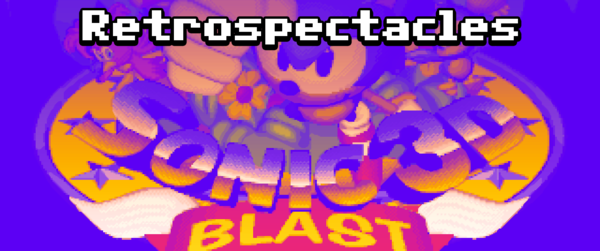
This is the first article in our new series, Retrospectacles, where we look back at beloved pop cultural sensations and break them down for the utterly ridiculous[1] things about them. From Sonic to the Catholic church, nothing is sacred from the eyes of dogmatic opinions and random development factoids. Speaking of Sonic, the poor blue hedgehog just happens to be our first target!
Sonic 3D Blast, also known as Sonic 3D: Flickies’ Island, was a 1996 platformer developed by Traveller’s Tales and Sonic Team. Published for the Sega Genesis a year before the console’s discontinuation, at one of the worst points of Sonic the Hedgehog’s lifespan as a franchise, there were a lot of things to go wrong here.
After the jump, we’ll delve into the history of the band-aid Sega used to cover up the gaping wound that Sonic X-treme left, touch upon the timeline of Sonic in 3D, find out about birds, and take a trip to Hell!
Development
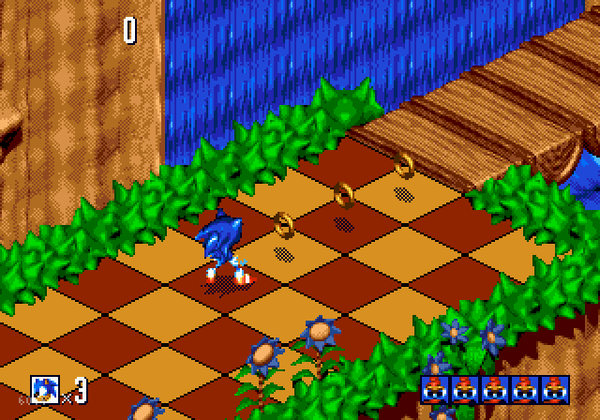
Sonic 3D Blast (1996, Sega Genesis)
Sonic 3D Blast was produced by the UK-based studio Traveller’s Tales (the same company that would later go on to make Sonic R for the Sega Saturn). Made a whole two years after the release of the Sega Saturn, it was intended to be the final Sonic game for the Genesis, with high expectations already in place that the already-doomed Sonic X-treme would be the Saturn’s killer app.
However, Sonic X-treme had been on its death bed for months before production on Sonic 3D Blast had even started. Fearing the worst, Sega commissioned a Saturn port.
The worst did happen: in the mere seven weeks that it took to port Sonic 3D Blast to the Sega Saturn, Sonic X-treme did end up getting cancelled. This left 3D Blast as the first Sonic game for the Saturn, with substantially more polish and playability than X-treme had at any point in its development. All that polish didn’t do it much good in the long term, though: being a playable game wasn’t much of a compliment when it was still a faux-3D game released five months after Super Mario 64, the best-selling game of the fifth console generation.
For a Genesis game, it wasn’t much of a technical marvel, but having it be the primary Sonic game for the Sega Saturn was even more humiliating. Using prerendered 3D models as sprites had already become commonplace technology back then (with Donkey Kong Country as the exemplar), and even the fully 3D special stages looked blocky in comparison.
Sonic R was the only other Sonic game released for the Sega Saturn, and although it was in full 3D, it was only a short spinoff game. Sonic X-treme left a gaping hole in Sonic’s history, making the Saturn the only major Sega console without a truly original Sonic game.
The burning question of why Sonic Team didn’t do anything about any of this rests on the fact that they were busy with NiGHTS into Dreams…, a game that Yuji Naka was basically treating as his baby for that time period. Development was long and tedious, and more importantly, it took time away from a potential Sonic Team-made Sonic game, so they delegated that work to Sega Technical Institute (Sonic X-treme) and Traveller’s Tales (Sonic 3D Blast).
NiGHTS lived on as the most memorable of all three games, with full 3D graphics, slick-controlling gameplay, the first appearance of Sega’s artificial life system, and the kind of technical polish you would only expect out of a Sonic Team game. It was the best-selling Saturn game at the time of its release, and lived on for years as a cult favorite.
But what’s Sonic 3D Blast even about?
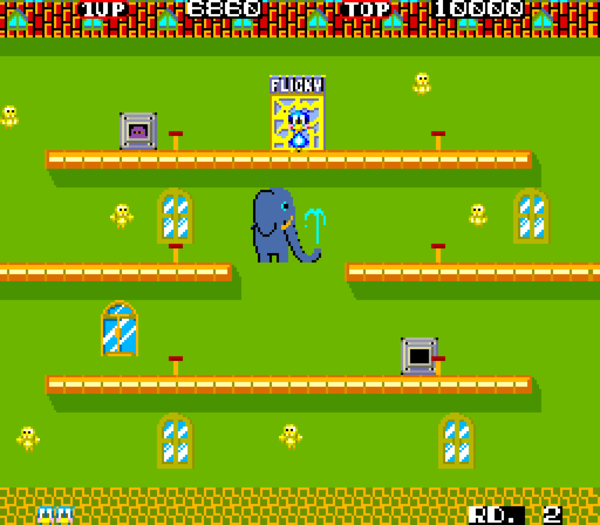
Flicky (1984, Arcade)
Sonic 3D Blast is notable for being the first game in the Sonic series to namedrop the Flickies, a species of small birds abundant in the Sonic universe.
The Flickies were hardly new at that point: they originated in a 1984 arcade game Sega had produced, starring the titular Flicky as a single mother rescuing her children from the perilous claws of house cats. Flicky would later appear seven years later in the first Sonic the Hedgehog game, as one of the animals trapped inside Badniks. In this case, it was implied that Flicky was not just one bird but rather the name of one of the many species endemic to Sonic’s universe.
But it was Sonic 3D Blast that became the first game to attempt to give them some sort of coherent backstory: as the game claims, Flickies are birds that live on their own island (the titular Flickies’ Island) and have the power to travel between dimensions. Being immensely powerful and mysterious has its downsides in the Sonic universe, though; as such, Eggman turns them into robots as part of yet another one of his Chaos Emerald-finding schemes, prompting Sonic to have to rescue them… again.
Port differences
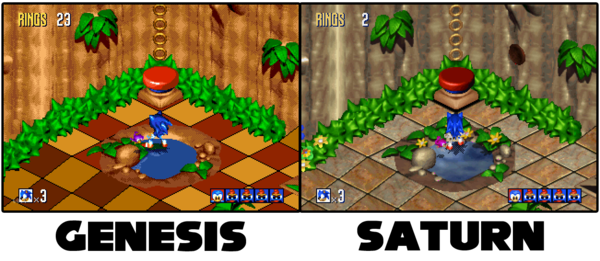
Most visible are the upgraded graphics for the Saturn, involving more intensely detailed sprites and textures. While the Genesis version is kludgey-looking and features a nauseatingly bright checkerboard pattern, the Saturn’s graphics are smooth and sleek, with a grungier color palette and more usage of tech-appropriate flourishes like scenery animation and transparency.
The soundtrack of the Genesis version was completely standard for most Sonic games at the time: fairly lush and competent compositions headed by Jun Senoue, with a tight grasp on FM synthesis and a couple of gems that would later be featured again in the Sonic Adventure soundtrack.
The Saturn port featured a completely new soundtrack by Richard Jacques (who also did all of the nauseatingly catchy earworms from Sonic R). Though the Genesis soundtrack was certainly remembered more in the long-term, the Saturn has it beat on rich CD-quality audio and deep atmospheric songs, adding a new tension that matches the grittier graphics.
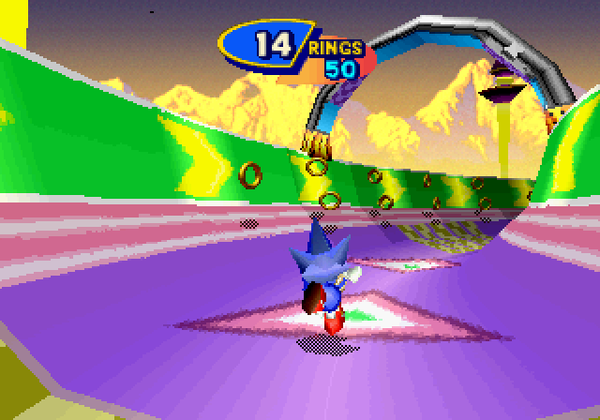
Hey! It's so pretty!
The Saturn special stage has Knuckles (or Tails) fly you to a bright neon crystal paradise, where you can run around a half-pipe in the glory of the full three-dimensions that the Sega Saturn could offer. That said, this special stage was pretty much a carbon copy of the Special Stage from Sonic 2. Although there were considerable gameplay and graphical differences, the overall concept was practically identical.
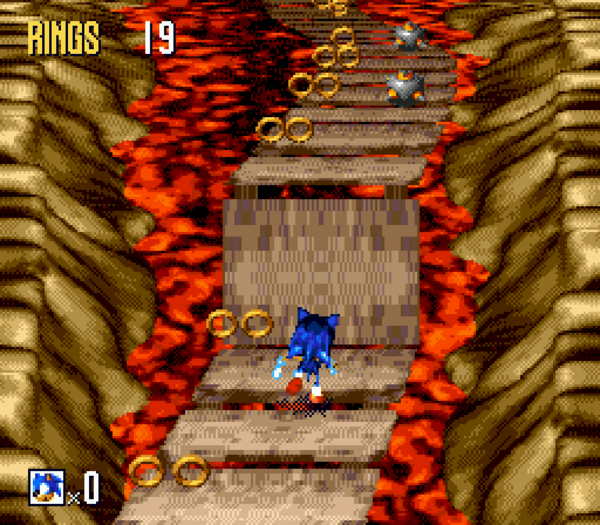
Bad and naughty hedgehogs get put into Hell to atone for their sins.
The Genesis special stage has Knuckles mysteriously teleport you directly into the fires of Hell, wherein you are plagued by strange distorted faux-3D and bombs that threaten to destroy your hard-earned rings… which actually are completely disappointingly trivial to collect, if you can get past the seasickness-inducing warping textures.
After the fact…
In the light of the mess that was Sonic X-treme, we would not see another third-party Sonic game for quite a while. Sonic Team tightened their grip on the Sonic series when they decided to produce Sonic Adventure, in the hopes of renewing the brand and increasing the quality control. Flickies would become important again in this game, where a family of Flickies featured heavily in a subplot involving a Chaos Emerald. It’s uncertain of if Sonic 3D Blast actually affected this decision, as Flickies no longer appear to be capable of moving through space-time.
Sonic 3D Blast is the exemplar of one of the worst points in Sonic the Hedgehog’s life as a series. Utilized as a stopgap measure to cover up one of Sega’s biggest failures, 3D Blast's greatest achievement is that it bridged the gap between 2D and 3D Sonic.
Though it’s become largely forgotten by the public in the light of smash hits like Sonic Adventure 2 and atrocities like Sonic 2006, it’s remembered by a few select dedicated fans for its campy soundtrack and unique gameplay. Still, just as much, it’s remembered for its awful controls, complete detachment from the main series, and the embarrassments that came with it.
Between outdated technology and bad management, it could have been so much more: when you shoot for the moon and end up adrift in the atmosphere, “you tried” only says so much.
this used to say ‘cringeworthy’ but that sounds so much harsher now dude ↩︎
Tagged: sonic the hedgehog traveller's tales